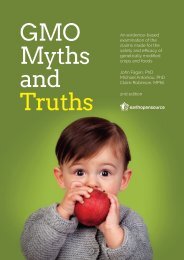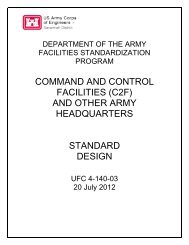1923%20Memoir%20on%20Maps%20of%20Chinese%20Turkistan%20by%20Stein%20s
1923%20Memoir%20on%20Maps%20of%20Chinese%20Turkistan%20by%20Stein%20s
1923%20Memoir%20on%20Maps%20of%20Chinese%20Turkistan%20by%20Stein%20s
Create successful ePaper yourself
Turn your PDF publications into a flip-book with our unique Google optimized e-Paper software.
8ec. iii.] SYMBOLS AND LOCAL NAMES 61<br />
numbers' with the addition of the letter a. On the third expedition difforent series of 'camp<br />
numbers' in Arabic, large Roman and small Itoman figures have been used to distinguish<br />
routes surveyed respectively by R.B. LB1 Singh, Muhammad Yakfib, and Afriz-gul or myself.<br />
The method of lettering conforms generally to that adopted in 1909 for the 'International<br />
Map of the World' on tl~e I/Million scale. Place names and<br />
~ ~ or Lettering. ~ h ~ other d topograpl~ical information have accordingly been in<br />
upright or Roman type (Doric) while Sanserif Italic lettering han been<br />
. -<br />
used for names of water-forms and communications. ' Hill names have been fnrther<br />
distingnished by the uee of Condensed Antique type.<br />
The wish to record in the map as much of topographical information as space would<br />
permit, together with certain limitations of available type founts, has led to the majority of<br />
vi]lape and similar local names being printed in a somewhat small Doric type (Diamond on<br />
- u<br />
Nonpareil), while the larger type sizes were reserved for more important names. From this<br />
rule a depart~lre has, however, been made in some cases for the sake of better legibility. Thus<br />
%long desert tracks where adequate space was available, Nonpareil type has been used for the<br />
names of certain localities, such as well-known roadsitle stations or camping places nrhich,<br />
thourrll not permanently occupie4 are yet of some importance to the passing traveller. It may<br />
u<br />
be lloted here also that where local names are shown \vithont any corresponding symbol, they<br />
refer to localities such as grazirlg grounds, small valle~s, etc., closely adjoining the route line.<br />
Throughout our common surveys I charged myself personally with the record of local<br />
names. For routes \vl~ich were followed only by my assistants I did<br />
~~~~~d of local names. my best to cl~eck and correct the record of local names they brought<br />
back thro~~gh an independent examination of natives acquainted with<br />
the ground. On some occasions, when an assistilnt hat1 to be detacbed for prolonged survey<br />
work ata considerable distance frorn my omn routes, I endeavoured to assure g~eater accuracy<br />
of record by sending with Inn1 a literate person capable of recording Turki local names more<br />
or less correctly in Arabic script. Nevertheless, I fear, it has not alwajs been possible in the<br />
case of independent surveys by assistants to eliminate mistakes due to imperfect hearing,<br />
inadequate training in phonetic spelling, or occasional misapprehension of a language with<br />
which they could acquire but a limited colloquial familiarity.<br />
In the case of Chinese local names in Kan-su the di5culties in the way of correct<br />
record were much greater than in that of Turkistsn names. Not being<br />
Chir,ese local names. a Sinologue myself 1 took the very necessary precaution of having them,<br />
wherever possible, written down on the spot also in Cllinese characters<br />
by my Chinese lifrrul~rs. \{'here, as frequently happened on the third erpeditiou, surveys had to<br />
be effected on Chinese ground without him, an endeavour was made to obtain a record of local<br />
names in Chinese writing by other means. Tllat notwithstanding these precautions numerous<br />
mistakes are liltely to have occurred, particularly as regards the narnes of small localities, n.i]l<br />
not surprise those familiar with the intricacies of Chinese phonetics and dialectic variations.<br />
The latter were bound to be often very puzzling to my ?ite~.uti whose home was distant Hunan<br />
and who, owing to t11e prevailing secretiveness of the Kan-su population, found it difficult<br />
at times to secure ready help from Mandarin-speaking local people. In transcribing Chinese<br />
names the Wade system as adopted in Professor Giles's Dictionary has been follo\\~ed. For<br />
the transcription of all names recorded in Chinese characters I am indebted to the kind help<br />
of Dr. Lionel Giles.<br />
With regard to Turlii and ir5nian names it mas niy aim to record in each case the<br />
Information RR to where tllc work of any of<br />
the three surve.voi.s was dono nnder my immediate<br />
supervision, cnn rendily be obtniued by reference to<br />
the accotrnt given in Chapter I, section ir.<br />
Houtcs of the third expedition survepd by<br />
Afrir-pol alone nrc distinguished by cnn~p numbers<br />
in smnll Romnr~ figores with the addition of the<br />
letter a.<br />
I may note here that in some Sheets like No. 25,<br />
29, the diversiolls made from the main routes to reach<br />
hill-station8 for triangulation, etc., have occasionally<br />
remnined nnrnnrked.<br />
' '1 hat Sanserif Itnlic type has been used nlso for<br />
nnmes of passes ( n~t coming correctly under the head<br />
of 'comm~~nicntions') is dot: to n misinterprctation<br />
of the roles Inid down by the 1nternntio1,al Mnp<br />
Confrrenco of 1909.<br />
' It is probable thnt in solue cases nnmes recorded<br />
by the surveyors for distant peaks or spnrs<br />
(see e.g. in Sheet No. 4. D. 4, Kotcrek, Lligh-suget)<br />
nre really the names cf rnlleye or other locnlities<br />
lying in their direction.






